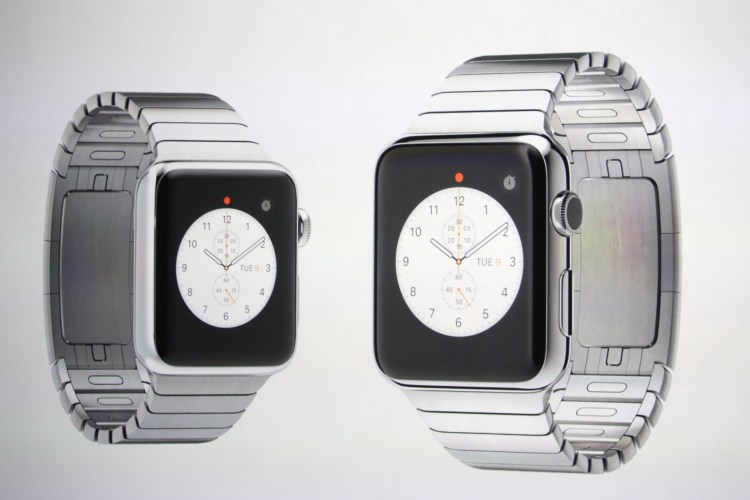It’s been an exciting week. Salesforce just created a venture arm, announcing a new $100 million venture fund with two major investments in wearables. Then Apple introduces two new products — the iPhone 6 with Apple Pay and the Apple Watch.
Just as the iPhone and other smartphones have transformed the way we do business, with companies running their affairs from their phones, how will next-generation wearables such as the Apple Watch impact the enterprise?
Just the other day, I was sitting in a meeting with a potential business partner and noticed his watch. It looked sleek but different, so I asked him about it.
“Oh. It’s an Android watch actually,” he said.
It was the first time I had seen a smartwatch out in the wild. I’d heard about them, seen the ads and read the various reviews but hadn’t seen one in action. The concept behind the smartwatch is fantastic — provides people with a hands-free option to receive real-time alerts, news, and recommendations at the right time. We’re seeing this type of technology really blooming on mobile — everything from Waze informing about real-time traffic so I don’t have to leave the house too early to UberConference sending me a text with a link as my conference call is about to begin — but nothing yet on the wearable front. Although it is rumored that there is an Android app that provides real-time train schedule update while allowing you to pay through your watch.
But seeing my colleague fidget with his watch every 5 minutes — either snoozing an alarm, tapping an email or swiping a text off the face — was distracting, frustrating to hold a conversation, and also seemed like it would be just as frustrating for the wearer.
So what are the business implications for this type of devices especially now that Apple, the revolutionary device maker, has entered the ring with the Apple Watch?
We can’t argue that delivering the right information at the right time isn’t useful — especially for the enterprise — because it is. Imagine what it can do for customer service. There is an escalation case that gets pushed to a premier customer support rep who is then able to do a one-tap call.
Now imagine real-time cues for sales reps alerting them of meeting cancellations so that they save a trip. Or imagine these alerts coupled with machine learning that figures out which prospects are warmer based on how responsive they are to your communications. Not only would we save a lot of time, but our smart device could be that silver bullet to winning more business by helping us be more efficient.
But how will the Apple Watch and other wearables change business interactions? I remember watching the movie, Her, earlier this year. The story takes place in the future and dives into human relationships, as fragile as they really are. So, what will happen to face-to-face interactions for sales reps, and what are the trade-offs with business value?
With Benioff’s expansion of the Salesforce platform to include wearable devices, he’s clearly putting his money on wearables for the enterprise. And if the Apple Watch takes off like previous i-devices, wearables are sure to affect and shape the workplace.
I just can’t shake that impression of my potential business partner glancing at his smartwatch every five minutes, and imagine it as the norm. Maybe the answer is Google Glass but I’ll save that story for another day.
Somrat Niyogi is the co-founder and chief executive of Stitch, a mobile-first sales productivity company. Prior to Stitch, Niyogi co-founded Miso, a company in the social TV space, and got his career start at Salesforce in 2003.


